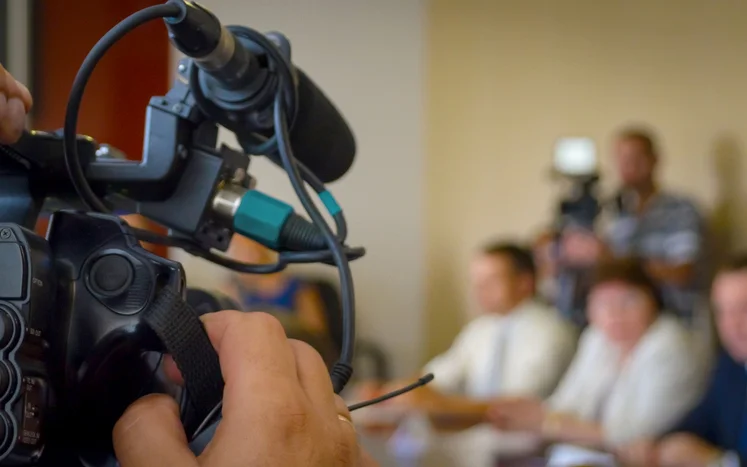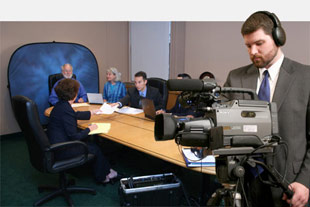How Legal Videography Improves the Reliability of Legal Proceedings
How Legal Videography Improves the Reliability of Legal Proceedings
Blog Article
Why Legal Videography Is Vital for Accurate Court Recordings
The duty of lawful videography in court settings can not be overstated, as it functions as a vital tool for maintaining the stability of court records. By capturing both verbal and non-verbal interaction, it boosts the quality of witness testaments and mirrors the nuances of courtroom interactions. This comprehensive documents not just aids in lowering prospective misconceptions however additionally supports appellate testimonials, thereby reinforcing the judicial procedure. Nonetheless, the implications of incorporating legal videography right into common courtroom techniques elevate crucial concerns regarding its more comprehensive influence on the lawful system. What might these implications entail?
Significance of Visual Proof
In the realm of legal proceedings, the relevance of aesthetic evidence can not be overstated. Visual proof acts as an effective device in developing truths, substantiating testaments, and improving the overall clearness of a case. This kind of evidence, which includes photographs, video clips, and layouts, can provide a substantial context that spoken summaries commonly do not have, therefore offering courts and judges a clearer understanding of the scenarios surrounding a situation.
Moreover, visual proof aids in the retention of details. Human cognition is inherently visual, and individuals are more likely to keep in mind and comprehend details offered in an aesthetic layout. In the court room, this can be vital, as compelling visual proof can sway point of views and strengthen the story presented by lawful agents.
Furthermore, using visual evidence can minimize misunderstandings and obscurities that frequently occur from spoken exchanges. By providing a direct depiction of occasions, aesthetic evidence assists to remove subjective analyses and fosters an extra objective exam of the facts. As a result, the combination of visual proof right into legal proceedings not just strengthens the integrity of the judicial procedure however also improves the chance of accomplishing a simply result.
Catching Non-Verbal Hints
Using sophisticated videography techniques can substantially boost the capture of non-verbal cues during legal process. Non-verbal communication, consisting of face expressions, body language, and eye contact, plays an essential role in sharing emotions and purposes that might not be explicitly specified in verbal testimony. legal videography. Lawful videography uses high-definition cams and tactical angles to ensure that these refined signs are tape-recorded with quality and accuracy
The capability to evaluate non-verbal actions can provide useful context to statements made during court sessions. A witness's hesitation or confidence can be interpreted through their pose or gestures, potentially influencing the court's assumption of credibility. The usage of close-up shots can assist concentrate on an audio speaker's expressions, permitting for a more nuanced understanding of the statement.
In addition, incorporating numerous electronic camera angles can create an extensive view of interactions, highlighting characteristics between celebrations involved. This diverse technique not just boosts the accuracy of the court document however also help in protecting the integrity of the judicial procedure - legal videography. Ultimately, recording non-verbal cues with lawful videography promotes a richer, more full depiction of courtroom process

Enhancing Statement Reliability
The reliability of testament can be substantially bolstered via using top notch lawful videography. Video clip recordings serve as an unbiased tool that captures not just the spoken words of witnesses yet also the subtleties of their distribution, including tone, pacing, and emotional expressiveness. This multifaceted documentation provides a clearer understanding of the witness's integrity and purposes, which can be essential in legal proceedings.
Moreover, legal videography minimizes the possibility for false impressions that may occur from created records alone. When jurors can observe a witness's temperament and body language together with their statement, they are much better equipped to assess the credibility and integrity of the evidence presented. This visual context can enhance the testimonial story, making it extra compelling and credible.
Furthermore, the visibility of a video recording can deter potential incongruities in testimony. Witnesses may be much more cautious in their statements when they know they are being tape-recorded, like it leading to even more precise check it out and sincere accounts. Generally, high-grade legal videography enhances the stability of testament, making sure that the court has accessibility to a complete and genuine depiction of the realities as shared by the witnesses.
Sustaining Appeals and Reviews
Legal videography plays an essential function in sustaining allures and reviews by providing an extensive aesthetic record of court procedures. This visual documentation captures not just the talked words of witnesses and lawyers but additionally the subtleties of body movement, tone of voice, and court characteristics. Such components can be critical in understanding the context of testimonies and debates presented.
In the appellate procedure, where the focus gets on mistakes of law and procedural justness, a video document can function as a vital device for appellate courts. It allows courts to review the original trial context, making certain that choices are based upon a total you can try these out understanding of the proceedings. The capability to visually evaluate the attitude of witnesses or the communications in between celebrations can expose insights that written transcripts may forget.

Furthermore, legal videography can aid in clearing up uncertainties in statements or procedural rulings, thereby reinforcing the basis for a charm. By using a trusted, objective account of what transpired in court, legal videography not only sustains the stability of the legal procedure but likewise equips all celebrations entailed to make educated decisions concerning their instances.
Streamlining Court Processes
Enhancing court effectiveness, lawful videography enhances processes by giving prompt accessibility to aesthetic documents of process. This technology permits judges, lawyers, and juries to review crucial testament and evidence, making certain that all celebrations have a clear understanding of the case. By recording the nuances of verbal and non-verbal communication, videography enhances the document, making it easier to realize the context and weight of testaments.

Additionally, video recordings can promote remote engagement in hearings, permitting better adaptability in organizing and engagement, which is especially useful in intricate situations including several stakeholders.
Final Thought
To conclude, lawful videography plays a vital duty in ensuring precise court recordings by providing important visual evidence that captures both verbal and non-verbal communication. This practice boosts the reliability of statements, supports appellate testimonials, and simplifies court room processes. By cultivating a thorough understanding of court room dynamics, lawful videography eventually contributes to a lot more fair judicial end results, reinforcing the integrity of the legal system and helping with notified decision-making.
Report this page